Cacao (Theobroma cacao) is an evergreen tree whose fully fermented seeds, known as “cacao beans,” are the main ingredient in cacao nibs, cacao paste, cacao butter, as well as the very popular confection, chocolate. Cacao beans are grown inside pods that can take on a variety of colours and are surrounded by a white fruit. The cacao plant and cacao beans have a long history of use by the indigenous cultures of latin America where they have been cultivated for thousands of years.
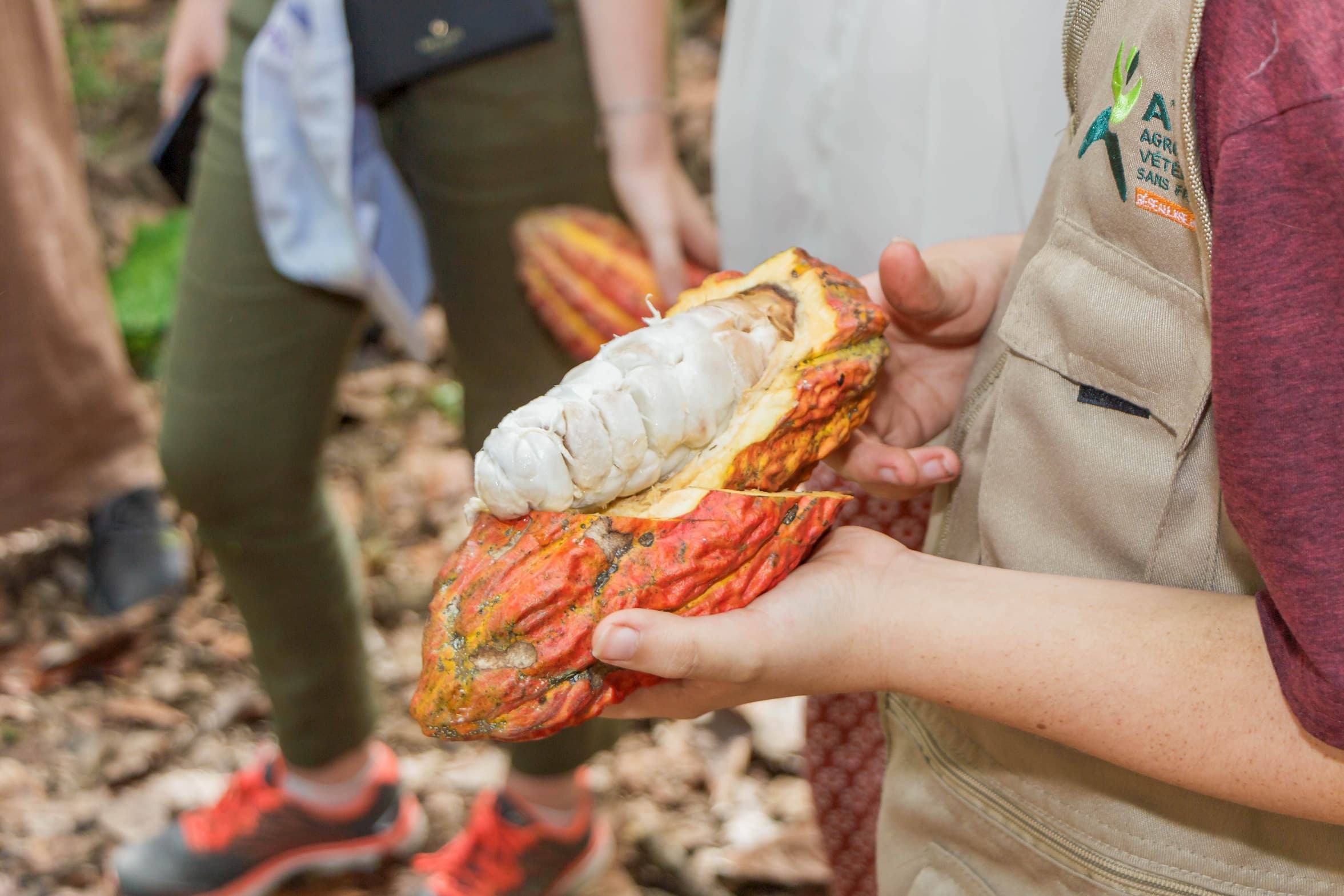
Opened cacao pod showing the white fruit surrounding the cacao beans.
Origins and history of cacao
Cacao trees originated in the Amazon basin of South America and were spread throughout Central America by various Mesoamerican civilisations, including the Olmecs, Mayans and the Aztecs. Cacao beans were regarded as a sacred and valuable commodity and used for trades and tribute to Aztecs kings. They were typically made into a drink to be consumed by nobility or as part of shamanic or religious cacao ceremonies. During the 16th century, following the arrival of the Spanish invaders, cargoes of cacao beans were exported to Europe. By the end of the 17th century, cacao had spread throughout Europe and further with more people enjoying cacao beverages, typically sweetened with sugar and used in milk based products.
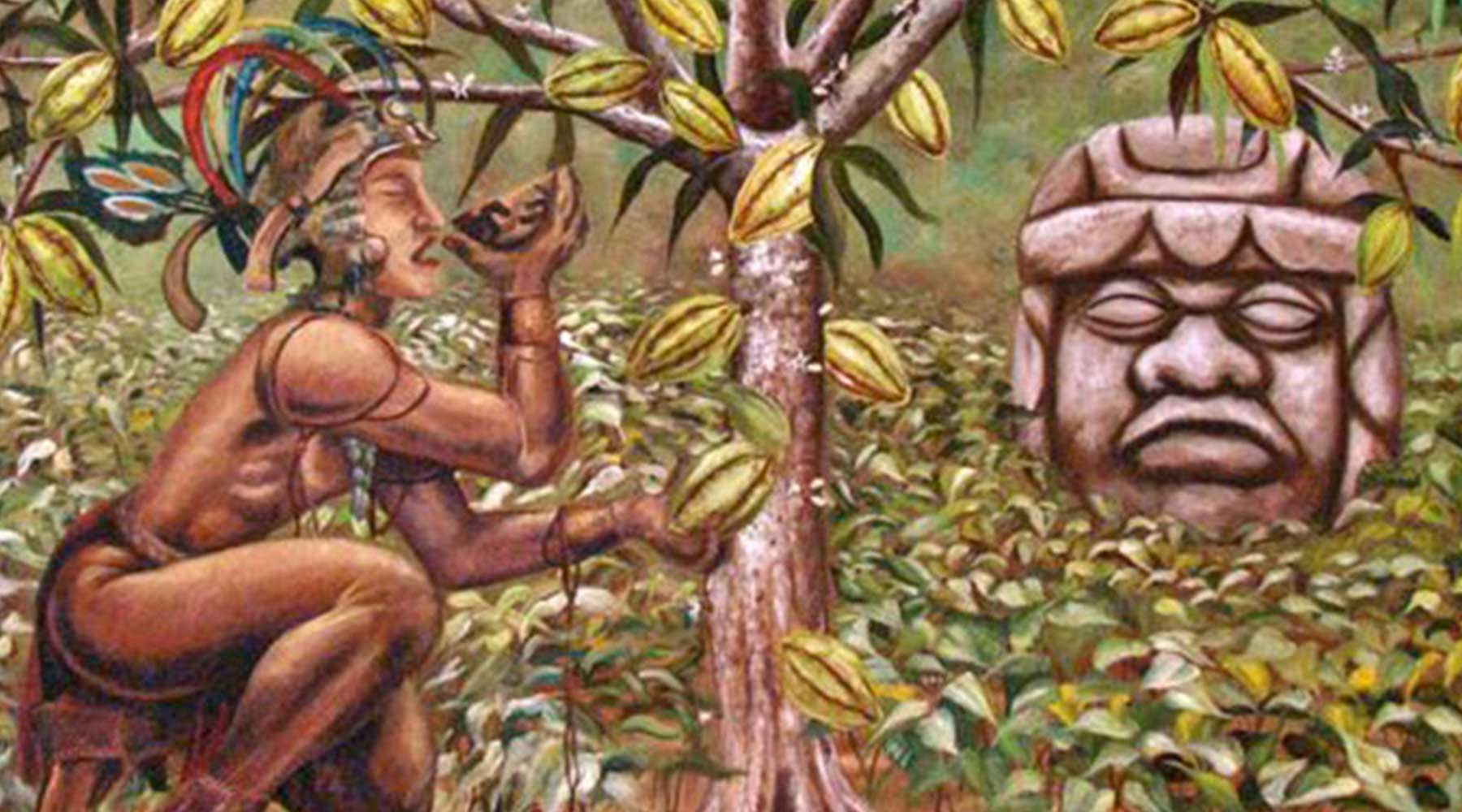
Cacao was used as a sacred plant medicine by the ancient tribes of Central and South America
With the popularity of sweetened cacao drinks in Europe came the development of new cacao-processing methods and new cacao-based products. Coenrad Johannes Van Houten developed Dutch pressed cocoa powder by 1928, which was eventually used by Joseph S. Fry to create the first commercial chocolate bar. Other recipes and processes were developed, such as the addition of milk powder for Cadbury’s milk chocolate or the process of “conching” for the smooth textured chocolates made by Lindt. With the growing demand worldwide for chocolate production increased in Central and South America, and people began to establish cacao plantations in other tropical places, such as Ghana, São Tome and Principe, and even South East Asia. Africa became the largest exporter of cacao beans by the 1920s and remains one of the largest exporters today. However, Latin American producers of cacao have managed to maintain their place in the market and still produce most of the world’s finer quality Criollo cacao. The journey of domesticated cacao has been over 5000 years in the making, with it now reaching almost every household on the planet and becoming one of the most commonly consumed commodities in the form of chocolate. Despite the Westernisation of cacao its true roots still lie in the South and Central regions of the Americas with the indigenous descendants of the original cultivators - a history, traditions and cultural practices that we believe should be protected and rescued.
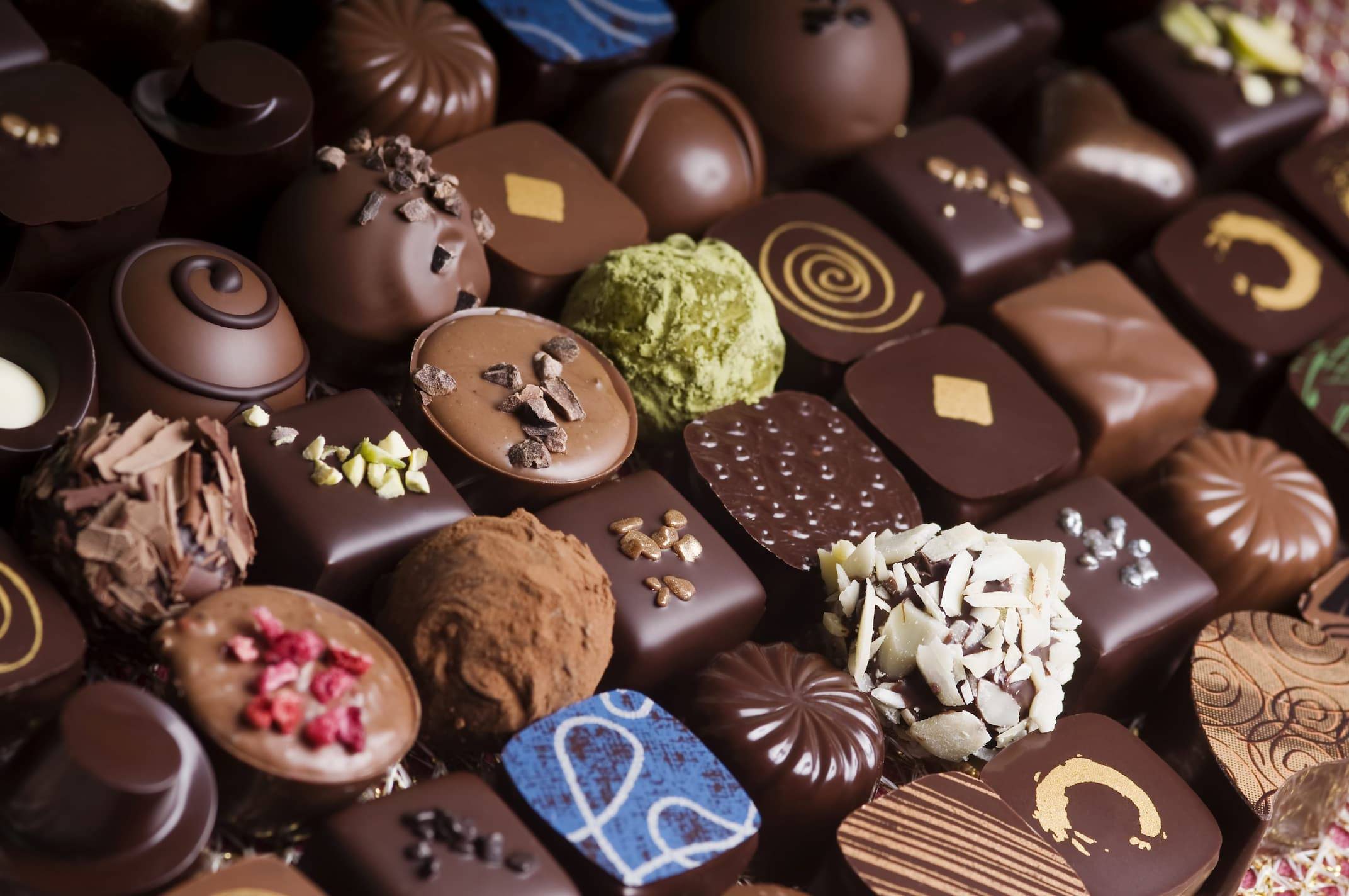
After cacao made its way to Europe it became the main component of modern day chocolate
How does cacao grow?
Cacao (Theobroma cacao) trees grow in tropical environments with most growth concentrated in a region called the “Cacao belt,” which is anywhere within 20 degrees north or south of the Equator. These trees require shade, usually provided by the foliage of shade trees, such as palms, banana plants, and Gliricidia sepium or madre de cacao (“mother of the cacao”).
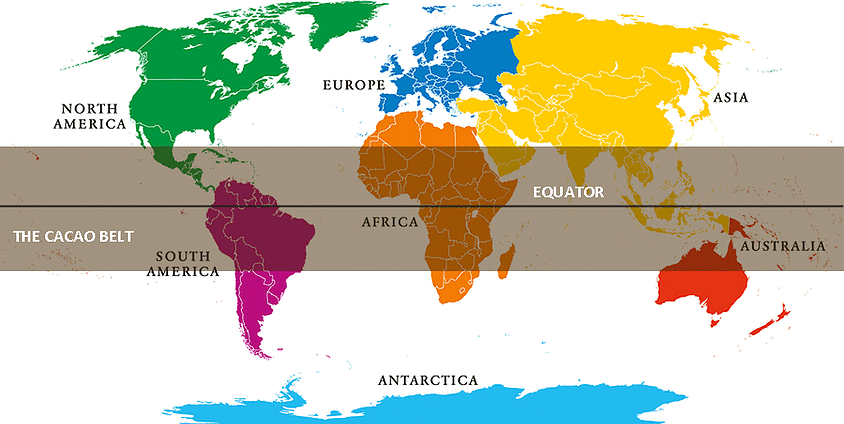
Domesticated cacao trees grow to about 8-12 metres tall and can grow for up to 50 years. Cacao fruit or “pods” develop from fertilised flowers and are about the size and shape of an American football. They can grow between 15-40 cm long and can take on various colours. Cacao trees produce about 20-30 pods each year and each pod contain roughly 20-60 beans. After the beans are harvested from the pods, they undergo fermentation to allow the unique flavour of the cacao bean to develop. They are then dried, cleaned, and finally packaged for transport to various manufacturing plants to be made into a variety a of cacao-based products.

Freshly dried raw Criollo cacao beans.
Varieties of cacao
Cacao trees can be categorised into three major biological varieties, which each possess their own unique properties and qualities. The major varieties are Criollo, Forastero, and Trinitario. Criollo cacao trees, meaning “native” in Spanish, are the variety that most closely resembles the cacao trees harvested by the ancient Mesoamerican civilisations. These are also considered the finest of the cacao varieties and most desired when making high quality confectionary. This variety is also the most fragile and difficult to grow and only makes up about 3% of the world’s cacao production. They are grown mainly in Mexico, Central America, Venezuela, and the Caribbean Islands.
Forastero cacao trees, meaning “stranger,” are a hardier variety that evolved after Criollo, possibly spreading from Brazil during the Spanish colonial period. They are plentiful in their yields and make up about 85% of the world’s cacao production today. They are grown in many regions including West Africa, Central Africa, South America, Central America and South East Asia.
Trinitario cacao is a crossbreed variety between the Forastero and Criollo varieties and was initially grown across Trinidad. They are now also grown in many regions and make up about 12% of the world’s cacao production. Like the Forastero they are hardier and less prone to disease than Criollo cacao.
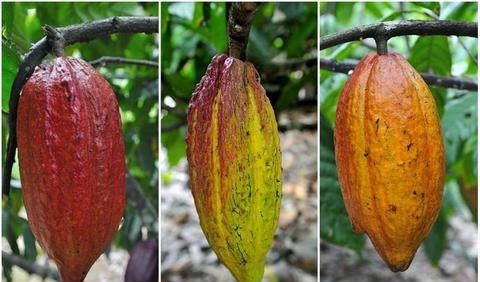
Different varieties of cacao Criollo, Forastero and Trinitario (left to right).
What are the different types of cacao products?
Cacao is often used as a paste, butter, powder, or even as nibs and can be taken as a daily dietary supplement. Cacao beans are the fully fermented seed of cacao trees and are the source for several cacao-based superfoods, which are nutrient- and antioxidant-rich, offering many health benefits. Cacao nibs are made from crushing down cacao beans into small fragments. Cacao nibs contain all the properties of the whole beans and can be added to any recipe to provide a powerful nutrient boost, a bitter chocolate flavour and a delicious crunchy texture.
Cacao paste is made from milling cacao beans into a creamy, rich paste that hardens at room temperature and can later be shaved or shredded and used in hot drinks or in a traditional cacao ceremony. Cacao paste also contains all the full goodness of the whole bean but is more rich and creamy in texture than the beans or nibs. Cacao beans can also be milled and then cold-pressed to separate the cacao butter - the fat component, from the cacao mass - the solid component, which can then be milled into cacao powder. Cacao powder contains none of the fat from the whole bean, so is lower in nutritional content compared to the bean, nibs or paste, however some minerals such as magnesium and the polyphenols (antioxidants) are concentrated in the process. In all cacao products there are different profiles of bioactive compounds, with each specific product having its own unique pros and cons.
There is often confusion between cacao vs cocoa and the properties of each. The main difference between these two is the temperature at which they are processed. Cacao infers raw and unheated, whereas cocoa refers to toasted beans. Furthermore cocoa beans are often combined with other ingredients, like sugar, to make desserts, such as chocolate as the roasting enhances the chocolate flavour. Cocoa-based foods contain less nutrients and antioxidants, due to the heat-treating process, so they do not provide the same health benefits as cacao-based foods.
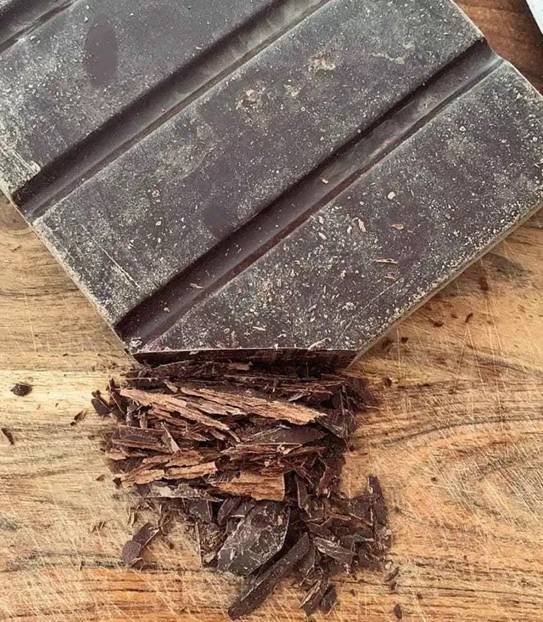
Ceremonial Criollo cacao paste.

Raw Criollo cacao powder.
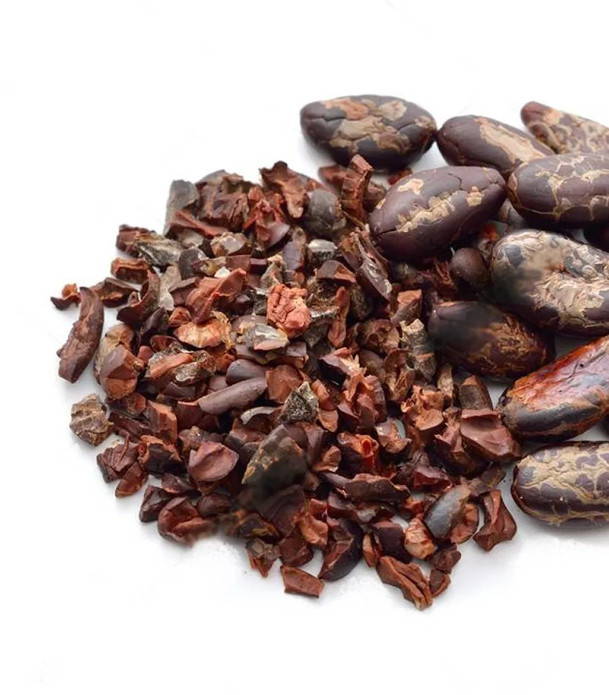
Raw Criollo cacao nibs.

Drops of Criollo cacao butter.
How does cacao work?
Cacao contains many bioactive compounds and essential minerals that work together to support immune and cardiovascular health, enhance cognitive function, elevate mood, and improve nutritional health. Flavanols in cacao possess antioxidant properties to reduce oxidative stress and mediate our inflammatory response. This is important in conditions associated with chronic inflammation, such as acne, obesity, and allergies, and is also important for mediating immune function. Theobromine is a mild stimulant in cacao that is derived from caffeine and exerts similar effects, amongst other unique ones. While it also interacts with adenosine receptors throughout the body to produce an uplifting effect, studies have shown that theobromine can also reduce blood pressure in patients with elevated blood pressure.
Cacao also contains the essential amino acid, tryptophan, and its related metabolite, tryptamine. Both of these compounds are important biological precursors for neurotransmitters, melatonin, serotonin, and for vitamin B3. They can also interact with the same receptors as our natural neurotransmitters and modulate our serotonergic pathways. Similarly, phenylethanolamine (PEA) interacts with our dopaminergic pathways, which are associated with feelings of pleasure and reward. These compounds are able to work together to elevate mood, enhance cognitive function and improve mental health.
Finally, cacao possesses essential minerals including magnesium, calcium, zinc, phosphorus, and iron. These minerals are crucial for normal physiological function, brain signalling, enzyme function, bone and skin health, cardiovascular health, and more. Cacao can be taken to help supplement for any mineral deficiencies and prevent the development of common associated symptoms and conditions, such as anaemia, bone loss, chronic fatigue, and more.
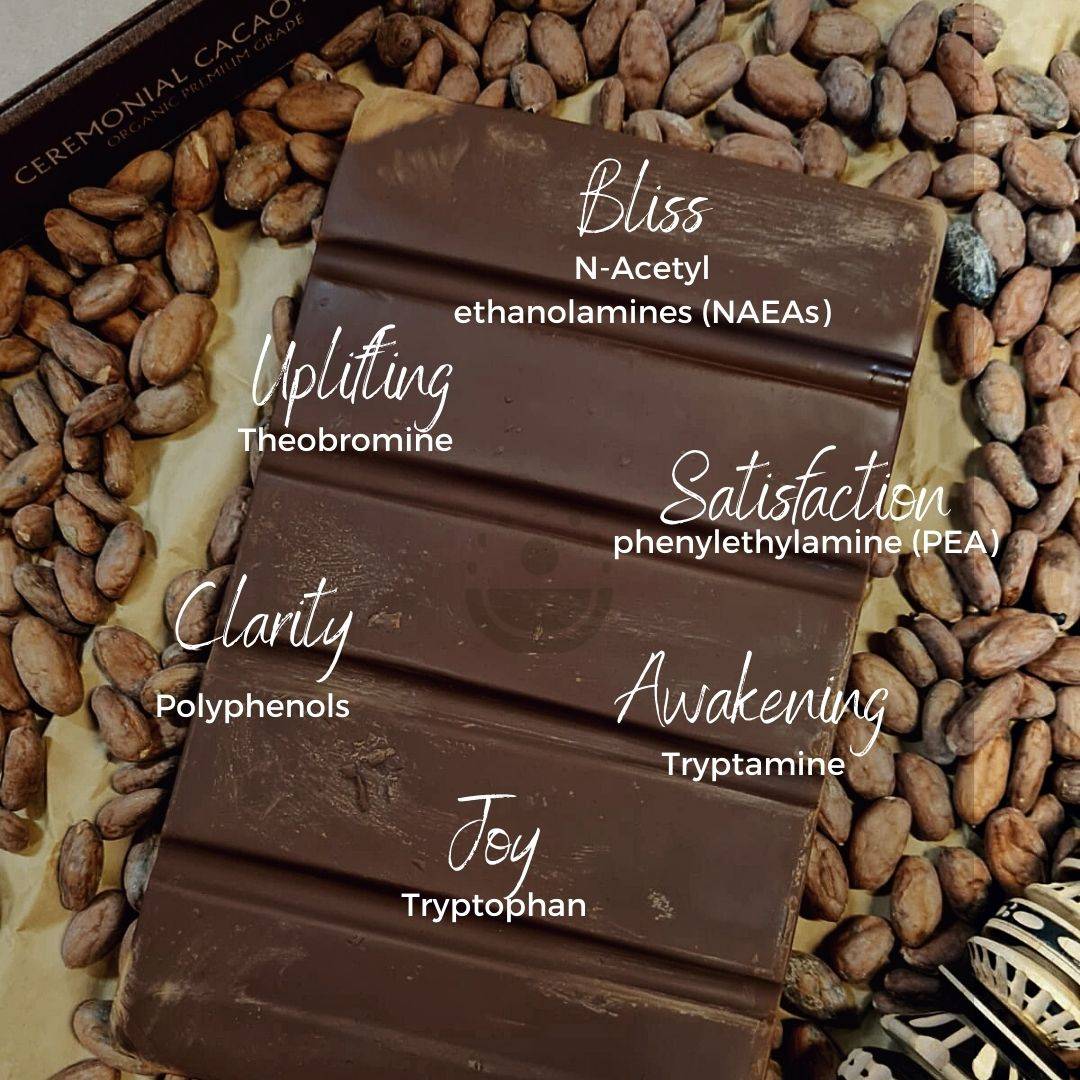
Ceremonial cacao is a powerhouse of uplifting, blissful and health enhancing molecules
What are the health benefits of cacao?
The health benefits of cacao are vast and scientific studies have shown cacao can assist with many symptoms and conditions by interacting with our natural biochemical and physiological pathways. Cacao can be taken to improve mental health, immunity and oxidative stress, cardiovascular health, metabolic syndrome, inflammatory conditions, fatigue, nutritional deficiencies, skin health, bone health, and even cancer. It is a versatile and all-natural food that can help to assist in one’s personal health journey. Cacao has been shown to benefit the health related conditions:
- Mental health
- Immunity and Inflammation
- Cardiovascular health
- Metabolic syndrome
- Fatigue
- Nutritional deficiencies
- Cancer
- Skin health
- Bone health
